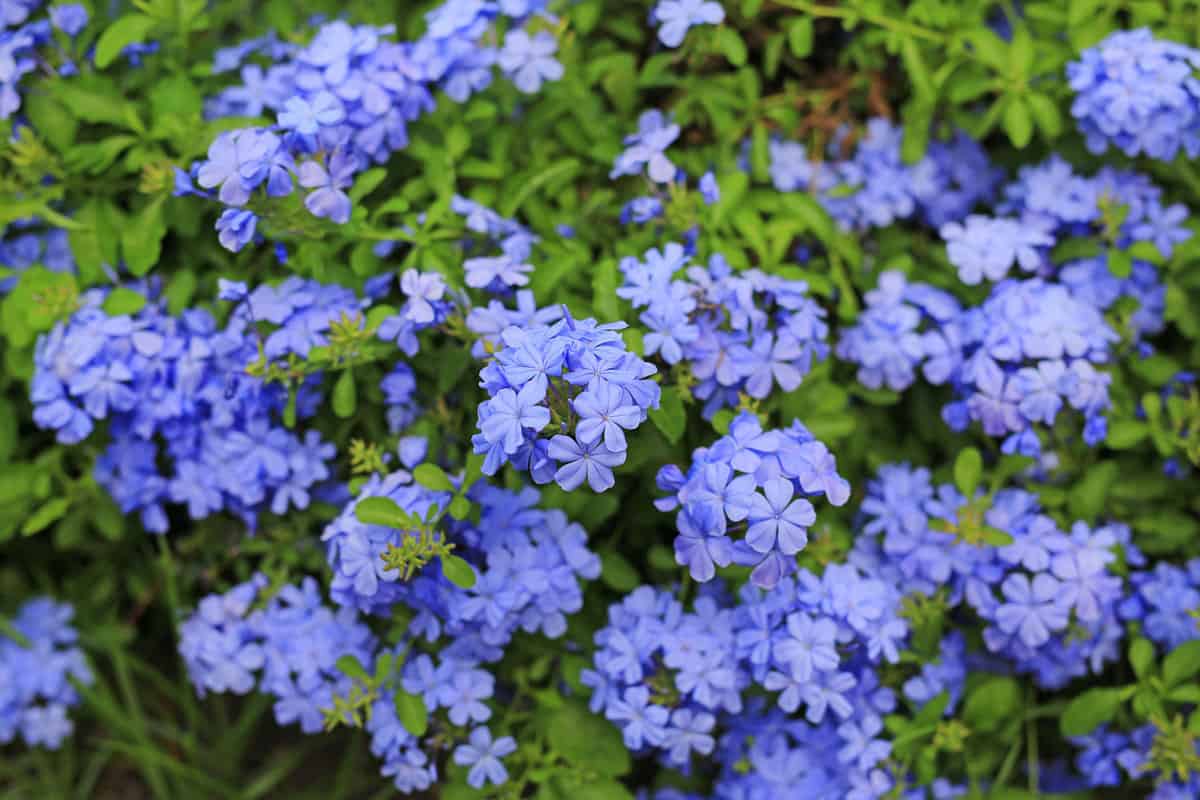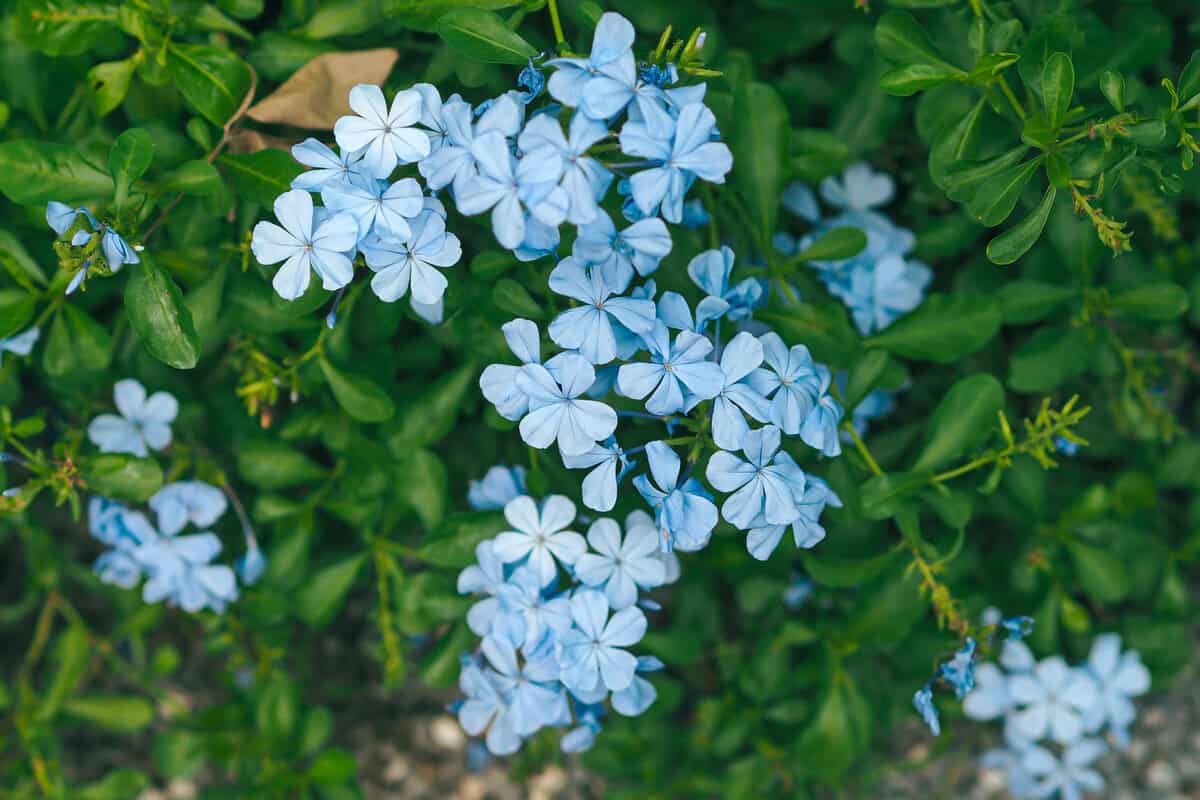Imagine your garden brimming with beauty, a tranquil place where your plants thrive in perfect harmony. Now, picture the nightmare of an aggressive plant takeover!
But fear not! Plumbago is not considered an invasive species in most areas.
Plumbago is a popular choice for gardeners looking to add a splash of color to their landscape. Its stunning blue flowers and lush green leaves make it a showstopper in any garden.

But before you get your hands dirty, let's know the secrets of plumbago's growth habits, ensuring your garden dreams become a vibrant reality.
Facts About Plumbago
Characteristics of Plumbago
Plumbago is a beautiful shrub that is best known for its bluish-violet flowers. This plant is native to South Africa and can grow up to 6 to 10 feet tall and 8 to 10 feet wide.
Plumbago is also known as the sky flower, and it is a popular choice for gardens and landscapes because of its attractive appearance and easy care.

Plumbago is a fast-growing plant that requires regular watering until established but is moderately drought-tolerant afterward.
This plant prefers full sun and well-drained soil, and it can be pruned at any time throughout the year to control its growth.
Species Diversity
The genus plumbago comprises about 22 species showcasing diverse characteristics.
Among these, Plumbago auriculata, known for its captivating blue or white flowers, and Plumbago zeylanica, recognized for its white blossoms and role as a host for butterfly larvae, are particularly common.
Does Plumbago Have Invasive Roots?
Plumbago Root System
Plumbago has a shallow root system that spreads horizontally rather than vertically. This means that plumbago roots are not invasive and are unlikely to cause damage to structures such as buildings or sidewalks.
However, plumbago roots can spread quickly and densely, making it difficult to remove the plant if you decide to do so in the future.
Therefore, it is essential to consider the potential risks before planting plumbago in your garden.
Plumbago can self-seed and spread to other areas of your garden, which can be both a blessing and a curse. While it can be nice to have more plumbago plants, it can also lead to overcrowding and competition for resources.
Managing Plumbago
Plumbago is a beautiful, low-maintenance flowering plant that can add color to any garden. Here are some tips for managing plumbago roots:
Where to Plant Plumbago
Plumbago prefers well-draining soil and partial to full sun. Avoid planting it near sidewalks, driveways, or buildings where its roots could cause damage.
Proper Spacing
Just like in life, you are giving your plumbago enough room to breathe is crucial for its well-being and your garden's overall harmony.
When planting, keep a distance of at least 3 to 5 feet between each plant. This allows them to grow without competing for nutrients and sunlight.
Plumbago appreciates some breathing room. Overcrowding can lead to increased moisture around the plants, potentially inviting diseases and pests.
And when in bloom, plumbago creates a mesmerizing spectacle. Imagine the impact when they have enough room to spread their wings!
Companion Planting with Plumbago
1. Pink Trumpet Vine
Podranea ricasoliana, commonly known as pink trumpet vine or Port St. John's creeper, is an excellent companion plant for plumbago.
They both thrive in similar sunny, well-drained conditions, reducing resource competition. The contrasting colors of the pink trumpet vine's pink flowers and plumbago's blue or white blooms create an attractive visual combination in gardens.
2. Cape Honeysuckle
Cape Honeysuckle (Tecomaria capensis) is an ideal companion for plumbago. Both plants have a lengthy blooming season, ensuring continuous color in your garden.
With cape honeysuckle's upright form and plumbago's sprawling nature, their varied growth habits utilize garden space efficiently. This pairing enhances the garden's aesthetic appeal and supports a healthy, diverse ecosystem.
Companion planting is more than just an aesthetic choice; it's about creating a thriving ecosystem in your garden!
Preventive Measures
One option is to plant plumbago in a raised bed or container to help contain its roots. Another option is to install a root barrier, a physical barrier preventing roots from spreading beyond a certain point.
Remedial Actions
One option is to dig up the plant and remove any excess roots. You can install a root barrier around the plant to prevent further spread.
If the roots have caused damage to nearby structures or plants, you may need to consult a professional for help with repairs.
Closing Thoughts
Plumbago is a beautiful and versatile plant that can add a lovely touch to any garden.
By adhering to proper care instructions, including regular pruning and choosing the right planting location, you can relish the beauty of plumbago and maintain its growth without any concerns about invasiveness.
Always research the plants you consider adding to your garden and choose those appropriate for your specific climate and soil conditions.
So go ahead and give plumbago a try! You won't be disappointed with its stunning blue flowers and easy maintenance.
To get to know more about invasive roots, check these articles:
